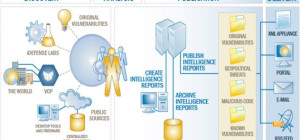 There’s no doubt that the Internet poses threats, despite all the excellent things it can do for us. Whether you’re on your phone, tablet, or computer, you need to watch out for the following four most terrifying online threats.
There’s no doubt that the Internet poses threats, despite all the excellent things it can do for us. Whether you’re on your phone, tablet, or computer, you need to watch out for the following four most terrifying online threats.
1. Trojan Horses
A Trojan Horse is a type of malware that appears a legitimate program but actually has much different purpose, similar to the famous Trojan Horse. Most often, people design them to gain “backdoor” access to your computer files, and they can cause horrific damage to your computer. According to the Huffington Post, experts expect these threats to increase, particularly the Citadel Trojan, which steals bank information. Common ways that people end up with trojan viruses include:
- Opening an untrustworthy email.
- Running a seemingly trustworthy program.
- Clicking on deceitful links.
2. Hackers
Hackers are among another one of the most dangerous threats, and through viruses and Trojan Horses, hackers can find their way into your computer, cause damage, and steal information. Most importantly, however, hackers can target large businesses, meaning that even if you’re using only trustworthy sites, you’re still at risk of becoming a victim.
3. Scammers
Scammers are another treat that you’ll want to watch out for. This is when people pose as others, trying to milk personal information or money from you, such as those people reported on NetworkWorld.com who were posing as FBI agents. However, there are plenty of other places you might encounter scams, so stay away from situations that ask for personal information unless you know you can trust the source.
4. Phishing Sites
Finally, you’ll want to watch out for phishing sites. These are websites that people set up to look like another trustworthy site in order to steal your information. For example, a person might design a website to look exactly like Paypal to get ahold of your login information and steal your money from your Paypal account. People might also use phishing sites to steal Social Security numbers and other personal information for identity theft. You can avoid phishing sites by:
- Making sure your email is secure and that it filters out questionable mail.
- Never using links in an email to reach a webpage.
- Checking that the website begins with https instead of http to ensure that it is a secure site.
How to Protect Yourself
Despite these threats, there are many ways to protect yourself, including:
- Protecting your computer before an attack occurs, such as by installing Internet security or anti-virus software from a reputable company.
- Avoiding opening questionable emails, websites, and programs.
- Using a security-conscious Internet provider.
- Eliminating viruses as soon as you notice them by using trustworthy virus removal tools.
- Familiarizing yourself with the signs of a virus or threat.
If you’re not sure where to get this software, contact your service provider or other computer professional for the best recommendations.
There are a variety of different viruses, threats, and types of spam out there, even if they aren’t all damaging. However, you should still understand the risks associated with these threats and learn how to protect yourself.







